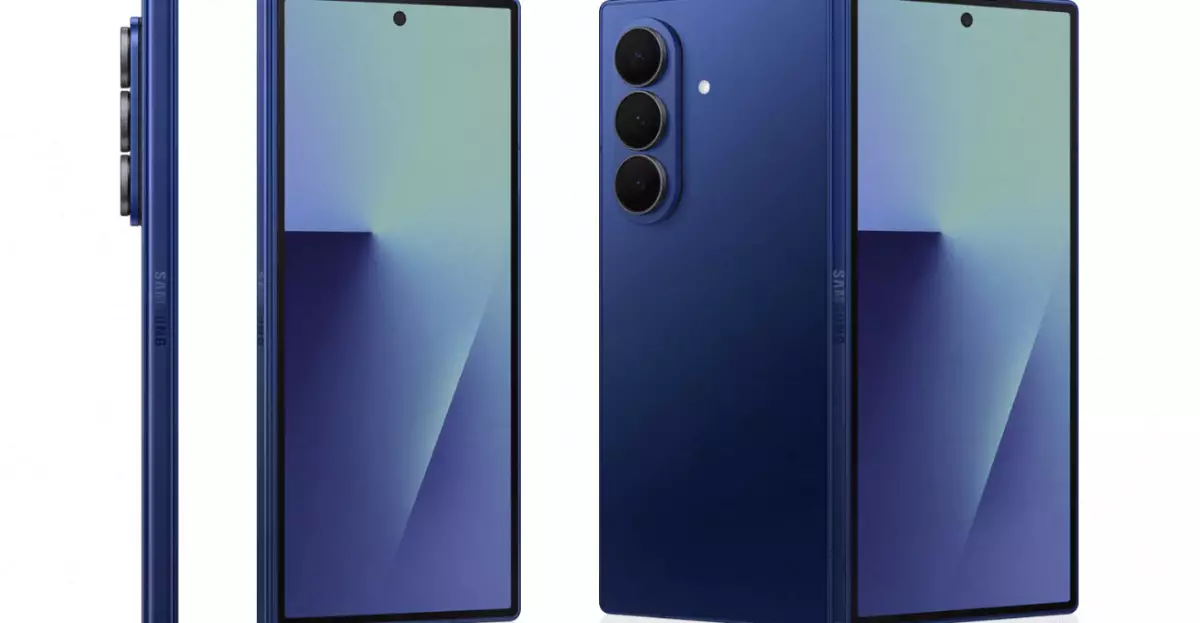In the rapidly evolving landscape of mobile technology, Samsung has long positioned itself as an innovator, pushing the boundaries of what smartphones can do. However, recent leaks hint at a profound shift in their design philosophy with the upcoming Galaxy Fold 7. The most striking revelation is the apparent discontinuation of S Pen support, a feature many had come to associate with Samsung’s foldable devices. This decision symbolizes more than just a hardware change; it reflects a broader strategic recalibration that challenges the company’s traditional approach to innovation and user experience.
The removal of S Pen functionality signals a move toward slimmer, more streamlined devices, prioritizing portability and aesthetic appeal over added features. While the S Pen has historically been a hallmark of Samsung’s Galaxy Note lineage and a beloved feature for productivity enthusiasts, this evolution suggests a possible redefinition of what the future of mobile productivity entails. It raises an important question: is Samsung choosing sleekness over versatility? The shift underscores the growing importance of minimalism and convenience in modern smartphones, even if it comes at the expense of certain functionality that once defined the brand.
Ultimately, this development highlights Samsung’s strategic focus on form factor and user experience, emphasizing design elegance and portability. It demonstrates a willingness to abandon long-held features if they hinder the pursuit of a thinner, lighter device—an admirable and bold stance in an otherwise saturated market.
The Implications of Dropping the S Pen: A Bold Leap or a Risky Misstep?
The potential discontinuation of S Pen support on the Galaxy Fold 7 is more than a minor technical tweak; it’s an assertion of Samsung’s reimagined identity. Many fans and power users see the S Pen as an essential productivity tool—a bridge between the smartphone and the tablet or even the laptop. Removing that feature could alienate a sizable demographic that relies on the stylus for drawing, note-taking, and precise input.
However, Samsung appears to be banking on the idea that newer, more integrated software solutions—such as improved touch gestures, foldable interface enhancements, and perhaps even the integration of stylus-like features directly into the device’s software—will compensate for the loss of dedicated S Pen hardware support. This presents a calculated gamble: will consumers embrace a sleeker device that sacrifices a beloved feature in favor of portability, or will they cling to the traditional stylus-centric experience?
From a strategic standpoint, this choice could be viewed as an acknowledgment that the future of mobile devices lies in minimalistic design and seamless usability rather than hardware add-ons. But it also carries risk, as it may dampen the appeal of the Fold series among consumers who see the S Pen as integral to their workflow. In prioritizing form factor, Samsung risks alienating a niche of dedicated users, potentially opening the door for competitors to capture that market segment with devices that still support stylus input.
Innovating Beyond Hardware: The Larger Narrative of Samsung’s Strategy
While the hardware changes are front and center, the broader narrative is embedded in Samsung’s ongoing effort to redefine what it means to innovate. With the Galaxy Watch models also receiving upgrades—more storage, higher brightness, and improved design—Samsung is emphasizing holistic device ecosystems rather than isolated features.
The emphasis on high storage capacity, longer battery life, and rugged features like dual-frequency GPS and safety sirens suggests a move toward creating devices that cater to a diverse range of user needs—from outdoor adventurers to productive professionals. Samsung’s focus appears to be shifting from the “feature list” mentality to a more integrated, experience-driven approach that combines hardware refinement with contextual software improvements.
This strategic recalibration indicates Samsung’s acknowledgment that technological leadership now depends as much on user experience as on raw innovation. The absence of S Pen support is a testament to this mindset: if hardware limitations or design ambitions make the stylus untenable in future foldable devices, Samsung is willing to adapt and redefine its core offerings accordingly. This shift, though risky, could position the brand as a mature innovator, capable of evolving with consumer preferences rather than adhering rigidly to past successes.
Final Reflection: A Defining Moment in Samsung’s Evolution
Samsung’s upcoming Galaxy Fold 7 exemplifies a company at a crossroads—a bold departure from traditional features in favor of a more refined and minimalistic design language. While some might lament the loss of the S Pen support, this move underscores a deeper, more intentional effort to reshape the device experience in ways that prioritize form, function, and future-proofing.
The decision to drop the S Pen isn’t merely about hardware specifications; it’s a statement of intent. Samsung is signaling that it values innovation that aligns with modern consumer desires—sleeker, more portable devices that can seamlessly blend into everyday life. Whether this gamble pays off remains to be seen, but one thing is clear: Samsung’s willingness to challenge its own conventions reflects a commitment to evolution and resilience in a fiercely competitive industry.

